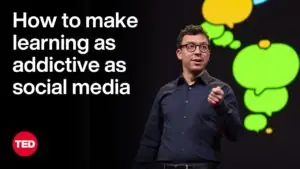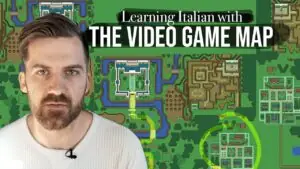“Game of Thrones,” a monumental television series of the 21st century, captivates audiences not just through its tales of political intrigue, violence, and fantasy but also through its intricate attention to cultural details. Among these, the creation of unique languages stands as a testament to the show’s commitment to crafting a vivid and believable world.

✅ AI Essay Writer ✅ AI Detector ✅ Plagchecker ✅ Paraphraser
✅ Summarizer ✅ Citation Generator
In the realm of fantasy fiction, the invention of languages often serves as a cornerstone in building a convincing and immersive universe.
“Game of Thrones,” along with its prequel “House of the Dragon,” excels in this aspect, offering viewers a glimpse into diverse cultures through the lens of language. Unlike J.R.R. Tolkien, who meticulously crafted languages for “The Lord of the Rings,” George R. R. Martin provided only a foundation of phrases for the languages in “A Song of Ice and Fire.” This groundwork paved the way for linguist David Peterson to develop the rich linguistic tapestry of Dothraki and Valyrian languages that enrich the “Game of Thrones” series.
The Significance of Language in Westeros and Essos
In “Game of Thrones,” the languages spoken by the characters do more than just facilitate communication; they reveal histories, cultures, and identities. Westeros, the primary setting for much of the series, is dominated by the Common Tongue, akin to English. Introduced by the Andals during their invasion, this language mirrors the historical linguistic evolution seen in the British Isles. The Old Tongue, primarily spoken by Wildlings beyond the Wall, represents the linguistic diversity and history of Westeros, much like ancient Germanic runes.

In Essos, the linguistic landscape is even more varied. High Valyrian, once the dominant language of a great empire, now serves as a language of the educated elite, similar to Latin in medieval Europe. Its decline gave rise to Low Valyrian, a group of dialects that evolved in the Free Cities, each distinct yet interconnected, much like the Romance languages derived from Latin.
The Dothraki language, created for the nomadic tribes of Essos’s central plains, draws inspiration from real-world languages like Russian and Arabic, reflecting the lifestyle and culture of its speakers.
Example: Hash yer dothrae chek? — Literally “Do you ride well?”, meaning “How are you?”
Creating Realism Through Fictional Languages
The creation of these languages is not merely a fanciful addition but a tool for enhancing the depth and realism of the “Game of Thrones” universe. Peterson’s meticulous work in developing languages like Dothraki and High Valyrian involved crafting grammatical rules, vocabulary, and even writing systems. This attention to linguistic detail provides viewers with a more immersive experience, allowing them to feel the authenticity of the diverse cultures within the show.
The languages of “Game of Thrones” also serve a narrative purpose, adding layers to character development and plot progression. For instance, Daenerys Targaryen’s use of High Valyrian reveals her heritage and education, while the distinct dialects of Low Valyrian spoken by characters like Grey Worm highlight the cultural complexities of Essos. The languages of the White Walkers and the mysterious lands of Asshai and Qarth, though less explored, add an element of mystique and otherworldliness to the story.
Final Thoughts
The invented languages of “Game of Thrones” are not just a creative endeavor but a vital component of the show’s storytelling and world-building. They provide viewers with a sense of authenticity and depth, enriching the narrative and allowing for a more engaging and immersive experience. As “Game of Thrones” continues to spawn spinoffs and sequels, the legacy of its languages will undoubtedly continue to captivate and inspire audiences worldwide.
FAQ
Follow us on Reddit for more insights and updates.





Comments (0)
Welcome to A*Help comments!
We’re all about debate and discussion at A*Help.
We value the diverse opinions of users, so you may find points of view that you don’t agree with. And that’s cool. However, there are certain things we’re not OK with: attempts to manipulate our data in any way, for example, or the posting of discriminative, offensive, hateful, or disparaging material.